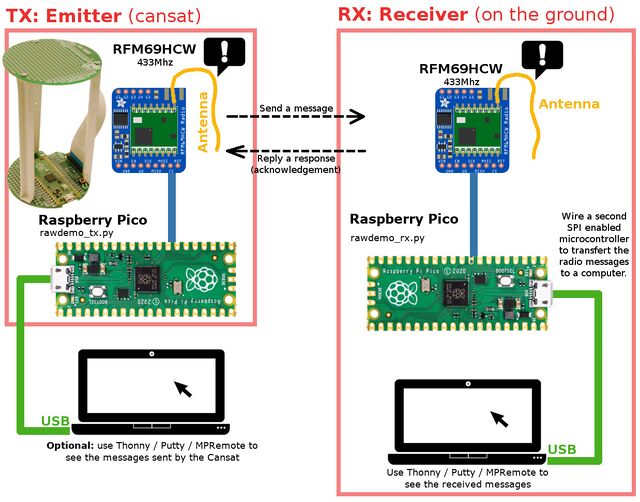ENG-CANSAT-PICO-RFM69HCW-TEST
Forewords
It is now time to establish a communication between:
- a Data Emitter (CanSat) made with a raspberry-Pico + RFM69HCW-433MHz.
- a Data Receiver (Base Station) made with the second RFM69HCW coupled to another Pico microcontroler.
As the kit contains contains two Pico microcontroller we will be able to create the "Data Emitter" on the CanSat as well as the Data Receiver at the ground station.
In this simple example:
- The Data Emitter will send a message and wait 500ms for a response (ACK).
- The Data Receiver will receive the message.
- The Data Receiver will send a ACK reply.
As we will see, there are 2 key items to be highlighted:
- The frequency must be identical in the emitter and the receiver (eg: 433.1 MHz in this example).
- The encryption key must be identical on the both side.
Installing the RFM69 library
The Adafruit's FRM69HCW are provided with a MicroPython library available on GitHub.
You can download and copy the library manually to your board from the Repository.
First, open the repository, then navigate to the file lib/rfm69.py .
Follow the steps describes in the "BMP280 library installation" to copy the RFM69 library to your micropython board.
Once copied, you can also check the proper installation by typing from rfm69 import * .
| The RFM69 library repository contains many examples of usage. Do not hesitate to check them! |
Written by Meurisse D. for MCHobby
